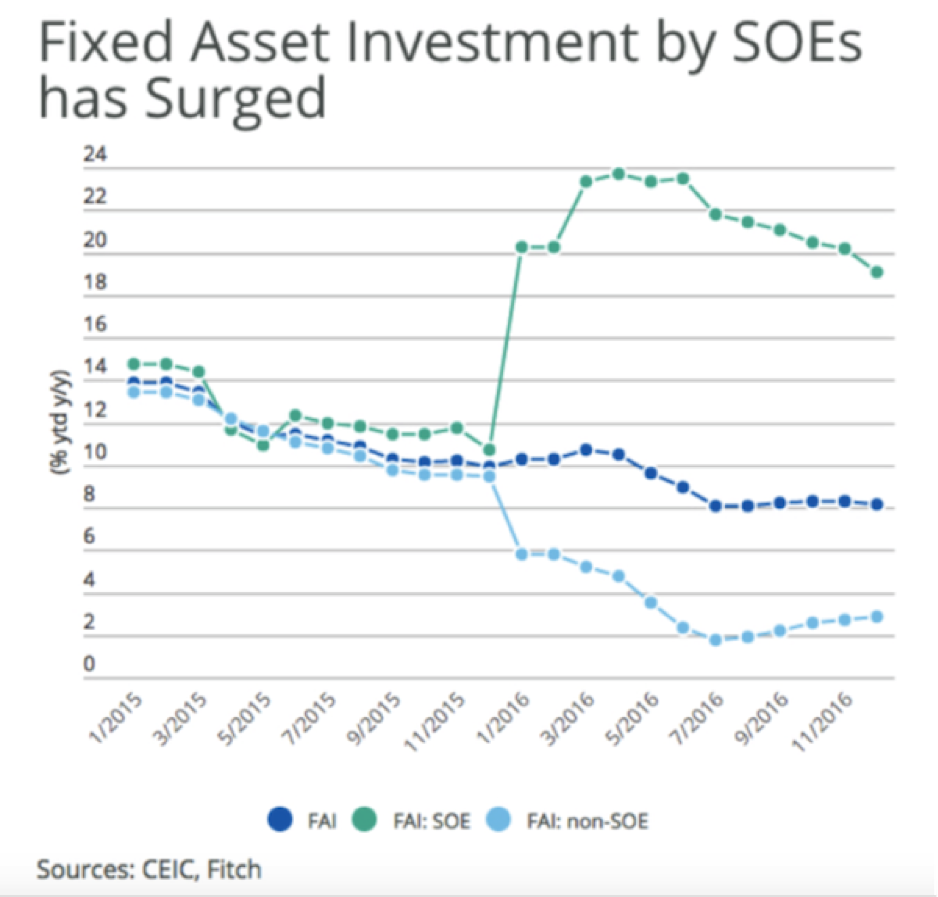A worrying development in Chinese infrastructure investment
State owned entities in China have a history of taking on large amounts of debt to build white elephant projects. A recent surge in investment by SOEs means Australian investors should consider the current buoyant prices of iron ore and many other commodities to be unsustainable. That does not mean that prices will drop immediately but they will eventually.
What's the single most important chart you are watching?
The most interesting chart I’ve seen recently tracks the split between state owned and private sector investment in fixed assets in China. It shows that the growth achieved in 2016 was in large part due to a surge in investment by state owned companies, with the private sector pulling back significantly on its investment.

What's it currently telling you?
This is a worrying development as state owned entities have a history of taking on large amounts of debt to build white elephant projects. Recent studies have found that state owned entities are achieving a miserly return on assets of 1.8%; well below the cost of debt. It has also been estimated that half of infrastructure projects in China have a negative economic value. The low hanging fruit in Chinese infrastructure investment has been picked. The projects being approved and developed now are likely to be the Chinese equivalent of the toll roads Australia built 10 years ago.
What are the implications for investors?
China is now in the late stage of its growth cycle with further growth dependent upon more record setting levels of debt growth. Anything associated with Chinese debt and growth industries (banks, property investment, construction, steel etc.) is at risk of a substantial slowdown. Australian investors should consider the current buoyant prices of iron ore and many other commodities to be unsustainable. That does not mean that prices will drop immediately but they will eventually.
2 topics

